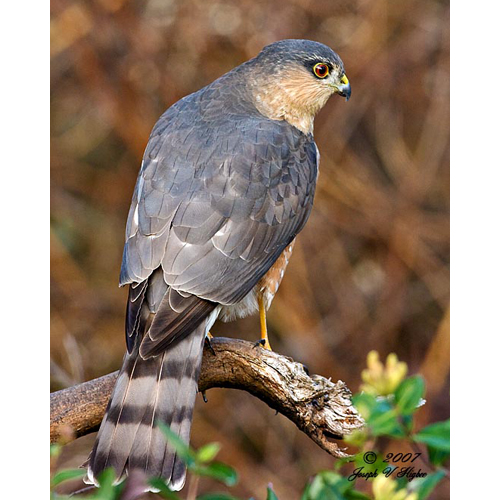General Description
The Sharp-shinned Hawk is the smallest of the three North American accipiters. The female is larger than the male. Adults have solid gray upperparts and barred, reddish-brown underparts. Their long, square tails have gray and black bars with very narrow, white tips. Their eyes are red. Immature birds are brown above with diffuse brown streaking below; they have yellow eyes. Sharp-shinned Hawks have short, rounded wings that are set slightly more forward on their bodies than those of the larger, but similar-looking, Cooper's Hawk. Their heads are also relatively smaller and their gray caps less distinct than the Cooper's. The white tip of the tail of the Cooper's Hawk is usually wider than that of Sharp-shinned Hawk, especially in the fall. All of these differences are subtle, making it quite difficult to distinguish a male Cooper's Hawk from a female Sharp-shinned Hawk.
Sharp-shinned Hawks are Fairly Common September, October, April Uncommon otherwise.Habitat
Sharp-shinned Hawks inhabit coniferous or mixed woodlands, avoiding open country. While Cooper's Hawks appear to prefer deciduous forests, Sharp-shinned Hawks appear to prefer coniferous forests. During winter, they are often found in woodlots, towns, and parks.
Behavior
Built to move quickly and quietly within dense forest, the hunting Sharp-shinned Hawk approaches its prey stealthily, until it is close enough to overcome its target with a burst of speed. This agility allows the bird to hunt successfully around bird feeders. The secretive traits and inconspicuous nature that allow the Sharp-shinned Hawk to surprise its prey also make it difficult to observe. Sharp-shinned Hawks often have a plucking post near their nests, where they go to pluck feathers from prey, leaving an accumulation of feathers and whitewash at the base of a stump, fence post, or fallen tree.

No comments:
Post a Comment